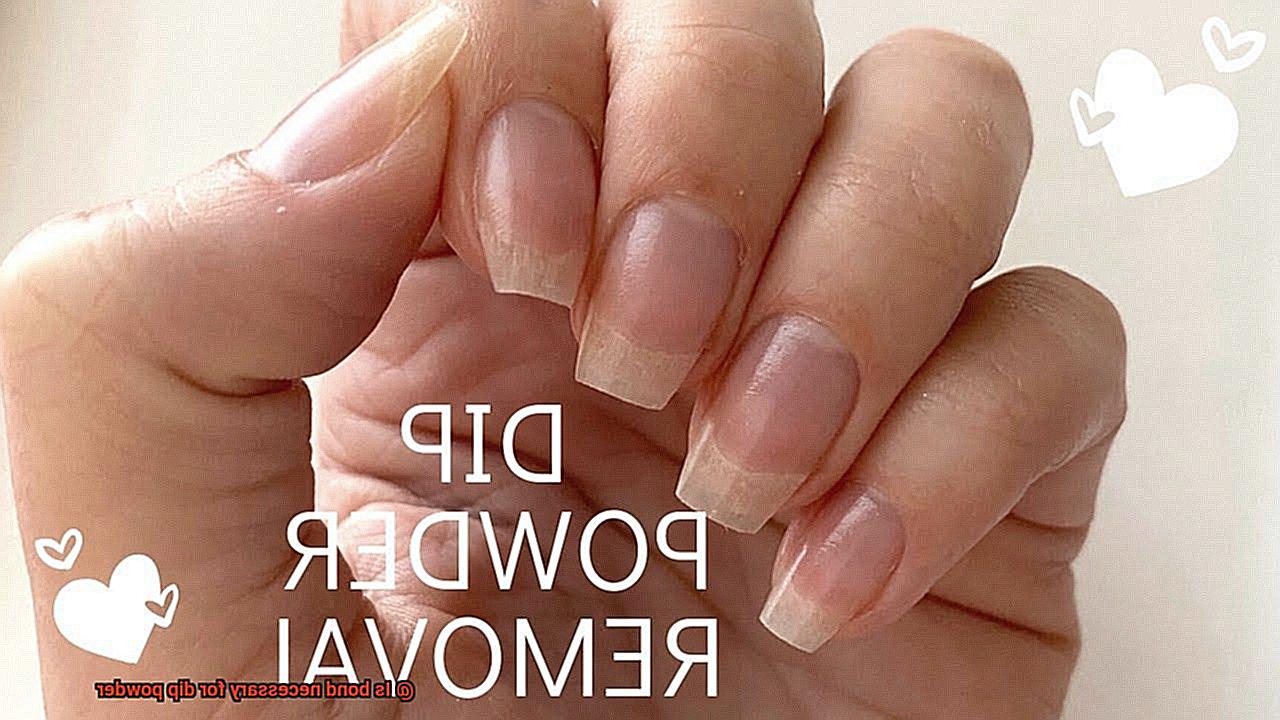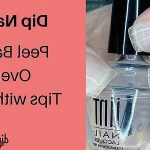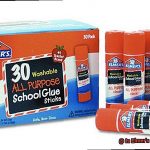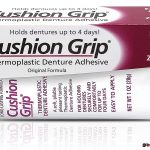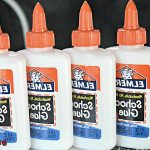Are you always on the lookout for the latest and greatest in nail trends? If so, then you’ve probably heard about dip powder manicures. These bad boys are known for their super long-lasting formula and jaw-dropping finish – they’re basically the holy grail of manicures.
But here’s the burning question: Is bond really necessary for dip powder? Well, fear not, my friend, because as an expert in all things nails, I’m here to spill the tea on why bond is a must-have and why it’s crucial to your dip powder game.
In this blog post, we’re going on an adventure to uncover the secrets behind bond in the world of dip powder nails. We’ll debunk those pesky myths that have been floating around, dive into the science behind it all, and even get some insights from the pros themselves. By the end of this journey, you’ll be armed with all the knowledge you need to make an informed decision about using bond for your fabulous manicures.
So grab your favorite polish and get ready to delve into the wonderful world of dip powder nails – it’s time to find out if bond is truly a necessity or just another nail myth.
What is Bond?
Contents
In recent years, dip powder nails have become a popular choice for those seeking durable and versatile manicures. However, achieving flawless and long-lasting dip powder nails requires attention to detail and proper nail preparation.
One crucial element in this process is bond, an adhesive that promotes adhesion between the natural nail and the dip powder. In this blog post, we will delve into the significance of bond in dip powder nails and provide insights into its usage.
The Importance of Bond:
Bond acts as a foundation for dip powder application by creating a sticky surface on the natural nail. This sticky layer allows the dip powder particles to adhere securely, ensuring that the manicure lasts for several weeks without any lifting or chipping. By using bond, you enhance the longevity and durability of your dip powder nails.
Proper Application Technique:
To maximize the effectiveness of bond, it is imperative to follow proper application techniques. Firstly, ensure that your nails are clean, dry, and free from any oils or debris. This step is crucial as it sets the stage for optimal adhesion.
Next, apply a thin layer of bond to each nail, ensuring even coverage. The thin layer is essential as it prevents excessive build-up and promotes a seamless application. Allow the bond to dry completely before proceeding with the dip powder application. This waiting period is vital as it allows the bond to fully set and create an optimal base for the dip powder, enhancing its adherence to the natural nail.
Personal Preference and Experimentation:
While bond is commonly used in dip powder nail applications, its necessity may vary depending on individual factors. Some individuals find that using bond improves the longevity of their manicures and enhances adhesion.
The bond acts as an insurance policy against lifting or chipping, giving them peace of mind. Conversely, others may have naturally strong nails that do not require additional bonding agents. These individuals may find that their dip powder nails adhere well without the use of bond. It is essential to experiment and find what works best for you. Try incorporating bond into your nail routine and observe the results. If you notice longer-lasting manicures and improved adhesion, then bond is a valuable addition to your process.
Why is Bond Used in Dip Powder Manicures?
Get ready to meet your new best friend – bond. This magical adhesive is the secret ingredient that keeps your manicure flawless and fabulous for weeks on end.
So, why is bond used in dip powder manicures? Let’s break it down. Bond acts as a primer, creating a strong bond between your natural nail and the dip powder. This ensures that the powder adheres properly, preventing chipping or lifting and giving you a long-lasting manicure that can withstand anything.
Lifting is a common issue with manicures, but fear not. Bond comes to the rescue by significantly reducing the chances of lifting. No more uneven or patchy nails, just a smooth and polished finish that turns heads.
But wait, there’s more. Bond also protects your precious natural nails from damage or staining caused by the dip powder. It acts as a barrier, shielding your nails from pigments or glitters that could leave behind unsightly discoloration. Talk about a superhero multitasker.
Now, let’s talk about adhesion. Some of us may have naturally oily or smooth nails, making it challenging for dip powder to stick. But don’t worry. Bond saves the day once again. By using bond as a primer, it creates a rougher surface on these tricky nail types, providing better grip and adhesion for the dip powder.
Just remember, use bond sparingly – a little goes a long way. And only apply it to natural nails. Never use it on artificial enhancements like acrylic or gel nails as it could cause damage.
Pros and Cons of Using Bond for Dip Powder Manicures
Bond, the adhesive superhero of the dip powder manicure world, brings both advantages and disadvantages to the table. Let’s delve into the pros and cons of using bond to determine if it’s the right choice for you.
Starting with the advantages, bond is a savior when it comes to preventing lifting. No one wants their flawless manicure to start separating from their nail. By creating a strong bond, this superhero adhesive reduces the likelihood of lifting and ensures your manicure stays intact for longer.
But that’s not all. Bond also enhances the overall appearance of your manicure. It creates a smooth and even surface for the dip powder, giving your nails a professional and polished look that will have everyone asking where you got them done.
Ease of application is another benefit of using bond. It provides a sticky surface for the dip powder to adhere to, making it easier to apply and ensuring it stays in place during the curing process. Who doesn’t love a quick and hassle-free manicure?
However, just like every superhero has weaknesses, bond is not without its drawbacks. One potential downside is that it can be drying for the nails. Some individuals may experience dryness or brittleness after regular use of bond. To combat this, make sure to moisturize and nourish your nails after removing a dip powder manicure.
Another drawback is that using bond adds an extra step to the manicure process. This means it takes more time and effort to complete a dip powder manicure with bond compared to one without it. If you prefer quick and simple manicures, using bond may not be ideal.
Lastly, some people may have sensitivities or allergies to the ingredients in bond. Patch testing new products or consulting with a professional is essential if you have sensitive skin or known allergies.
Different Brands and Their Recommendations on the Use of Bond
Different brands have varying recommendations on the use of bond in dip powder manicures. Understanding these recommendations is crucial to achieving a long-lasting and flawless manicure. Let’s explore the different approaches taken by various brands when it comes to this adhesive superhero.
Bond as a Preliminary Step:
Some brands suggest using a bonding agent, commonly known as bond, as a preliminary step before applying dip powder. This magical elixir plays the role of a primer by eliminating oil and residue from the nail surface. It creates a rough texture, ensuring better adhesion between your natural nail and the dip powder. To use bond, simply apply a thin coat after prepping and cleaning your nails. Allow it to dry completely before proceeding to the next step. This extra layer of adhesion can significantly enhance the longevity of your manicure.
No Bond Required:
Surprisingly, not all brands require the use of bond in their dip powder application process. These brands have formulated their dip powders to adhere well without the need for a bonding agent. However, it is essential to carefully read and follow the instructions provided by the specific brand you are using to determine if bond is necessary.
Alternative Products:
In addition to traditional bond, some brands offer alternative products that serve the same purpose of creating adhesion between your natural nail and the dip powder. These products can be used interchangeably with bond, but for optimal results, it is recommended to stick with products from the same brand. Mixing products from different brands may not yield the desired outcome.

Ultimately, whether or not you use bond depends on your personal preference and experience. Some individuals find that it improves adhesion and prolongs the wear of their manicure, while others may find it unnecessary for their specific needs. Experimenting with different brands and their recommendations will help you discover what works best for you.
Factors That Affect Adhesion Without Bond
Today, we’re delving into the realm of adhesion without bond, uncovering the factors that can make or break your manicure. Get ready to discover the secrets behind achieving flawless and long-lasting nails without relying on an extra adhesive superhero. Grab your favorite nail polish and let’s embark on this journey together.
Natural Nail Condition: The Foundation of Adhesion
Before you dip into the powder, let’s talk about your natural nails. Oily or moist surfaces are notorious for sabotaging adhesion. So, prep those nails properly. Gently buff away any oil or debris, cleanse them thoroughly, and embrace the power of a nail dehydrator. With a clean and dry canvas, optimal adhesion becomes a reality.
pH Balance: The Balancing Act for Perfect Adhesion
Did you know that your nails have their own pH balance? It’s true. And this balance can make or break your dip powder adhesion. Acidic or alkaline nails won’t play nice with the powder. Level the playing field by using a pH balancing agent before diving into the dip. A harmonious pH environment ensures a strong bond between the powder and your nails.
Application Technique: The Magic Touch
Ah, technique – the secret ingredient for breathtaking manicures. To achieve impeccable adhesion without bond, become a master of application technique. Thin and even layers are key. Give each layer ample time to dry before moving on to the next, preventing lifting and peeling nightmares. Meticulousness is your ally in this quest for long-lasting beauty.
Nail Shape and Length: The Shape of Strength
Now let’s discuss nail shape and length – crucial aspects that impact adhesion without bond. Long, sharp nails are prone to breakage and lifting, jeopardizing the longevity of your manicure. Opt for a moderate length and shape your nails into a smooth, rounded or square silhouette. This stability reduces the risk of chipping or lifting, ensuring your manicure stays flawless.
Environmental Factors: Battling Mother Nature
Ah, the whims of Mother Nature – she loves to challenge our manicure game. Humidity, temperature, and water exposure can all affect adhesion without bond. High humidity levels create excess moisture, making it tricky for the powder to adhere effectively. Extreme temperatures weaken the bond, jeopardizing the longevity of your manicure. Moreover, prolonged water exposure from daily chores or swimming weakens adhesion over time. Stay one step ahead by donning gloves during household tasks or avoiding excessive moisture to preserve your dip powder’s magnificence.
Personal Preference and Experience with Bond
Today, we delve into the intriguing topic of bond and its role in achieving that flawless and long-lasting look. Personal preference and experience with bond can significantly shape an individual’s opinion on this matter, so let’s embark on a journey of exploration together.
Personal preference is a powerful force in determining whether bond is necessary for a dip powder manicure. For some nail enthusiasts, bond is their knight in shining armor, providing an extra layer of protection and adhesion. It forms a robust bond between the natural nail and the dip powder, reducing the risk of pesky lifting and chipping. If you have weak or brittle nails, bond may become your superhero sidekick.
However, experience with bond can also sway one’s perspective. Those who have witnessed the magic of bond firsthand believe it to be an essential ingredient for achieving exquisite results. Conversely, individuals who have not witnessed any noticeable benefits or have encountered issues like lifting or peeling may question its necessity.
Let’s unravel the advantages and disadvantages now. Using bond as part of your dip powder manicure can enhance adhesion and longevity. It acts as a shield for your nails, especially if they tend to be delicate. But for some, bond can make their nails feel excessively rigid or cause excessive dryness. In such cases, it may be wise to skip the bond step or explore alternative methods to improve adhesion.
It’s important to acknowledge that certain brands or systems may recommend using bond as an integral part of their application process. In these instances, following the manufacturer’s instructions becomes crucial to unlocking optimal results.
In conclusion, the necessity of using bond for a dip powder manicure is subjective. It ultimately boils down to personal preference and experience. Don’t hesitate to experiment with various techniques and products until you discover what resonates best with you. And if you crave guidance on this mesmerizing journey, seek the wisdom of a professional nail technician who can offer bespoke advice tailored to your unique needs.
lsuxDXYyGhU” >
Conclusion
In conclusion, we have thoroughly explored the question of whether bond is necessary for dip powder nails. Bond, that magical adhesive that creates a strong bond between your natural nail and the dip powder, plays a crucial role in ensuring a flawless and long-lasting manicure.
The true power of bond lies in its ability to create a sticky surface on your natural nail, securely holding those dip powder particles in place. This not only enhances the longevity and durability of your manicure but also prevents any annoying lifting or chipping. So don’t underestimate the importance of proper application techniques – apply a thin layer of bond and let it dry completely before diving into that fabulous dip powder.
Now, while using bond is typically recommended for dip powder nails, its necessity can vary depending on individual factors. Some lucky individuals may find their naturally strong nails don’t need any extra bonding agents, while others swear by the added adhesion and extended wear they get from using bond. It’s all about finding what works best for you through experimentation.
Different brands have different recommendations when it comes to bond usage. Some suggest using it as a preliminary step before applying dip powder, while others formulate their powders to adhere perfectly without it. At the end of the day, your personal preference and experience will determine whether or not you need bond for your dip powder manicures.
So go ahead and dive headfirst into the world of dip powder nails with confidence. Armed with this newfound knowledge, you’ll be able to achieve flawless and head-turning manicures that make everyone envious.

